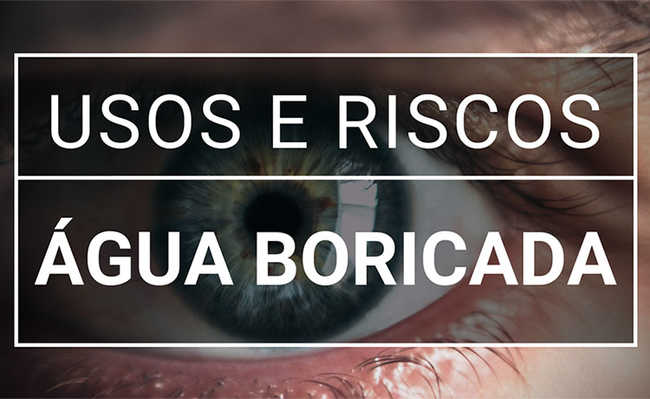What is it and what is it for boricada water
Boricada water is not intended for use on the eyes. Understand

Boric water is a clear, colorless and odorless solution with a 3% boric acid proportion. Widely used for eye treatments, it can provide therapeutic benefits, but it also poses health risks if used incorrectly.
- How to make alkaline water?
Boric acid is the most significant component of boricaded water and is what gives it antiseptic properties. Acid absorption is most effective through wounds. However, this contact, as well as oral ingestion, can cause intoxication.
- Stye: treatment, symptoms and causes
Exposure to boric acid dust often causes eye irritation. Due to reports of toxicity, its sale is rarely available in some countries, its use as an antiseptic solution in the US, for example, has been banned by the medical profession.
In Brazil, boric acid is presented in concentrations of up to 5% in products sold without a prescription. But this may be a cause for concern, given that some health agencies, such as the FDA (Food and Drug Administration - Federal agency of the US Department of Health and Human Services) questions the safety of topical use of boric acid as an eye antiseptic.
What is boricada water for
The medicinal use of boricada water is mainly due to its antiseptic action against bacteria and fungi. Typically, boricada water is used in the eyes, skin wounds and even boils.
water boricade in the eyes
The boricade water in the eyes has been shown as an option for the treatment of conditions. However, its inappropriate use can be harmful and even worsen the cases of eye diseases.
A study analyzed the use of boricaded water in the eyes and concluded that the incorrect application of boricaded water can worsen ailments.
- Conjunctivitis: causes, symptoms and treatment
According to the study, medicine bottles and boricada water solutions can be vehicles for transferring pathogenic microorganisms to the eyes.
Bacteria of the species were found Staphylococcus aureus in the caps of bottles containing boricada water , while in the connective tissue of the user of the same bottle of boricada water , the bacteria was found Morganella Morganii.
The study suggests that this type of contamination was due to the time the bottle was open (which was a week) and the carelessness of the user to support the container lid anywhere.
Other bacteria found in open bottles of boricada water were the Staphylococcus sp and the Staphylococcus coagulase. In the connective tissue of people who used these bottles of boricada water , bacteria were found Staphylococcus coagulase, Staphylococcus aureus, Corynebacterium xerosis, Morganella Morganii, Streptococcus viridans and Escherichia coli.
Thus, even if boricaded water has antiseptic therapeutic effects, there is the possibility of contamination due to misuse, bringing risks to the health of the eyes. The study in question showed that even in hospitals there is this type of contamination.
In addition to the risk of contamination by pathogenic microorganisms, boricada water is not a product specially developed for ophthalmic use.
From the 1920s onwards, all products made to be applied to the eyes were required to be prepared in an isotonic manner, that is, to present a concentration close to that of the liquids that make up the eyes. As boricaded water does not necessarily have the isotonic characteristic, it does not present itself as a completely safe product for use in the eyes.
To ensure a safe use of boricaded water in the eyes, stricter regulation is needed that informs the product sold the proper uses, composition and forms of preparation and handling of boricaded water.










